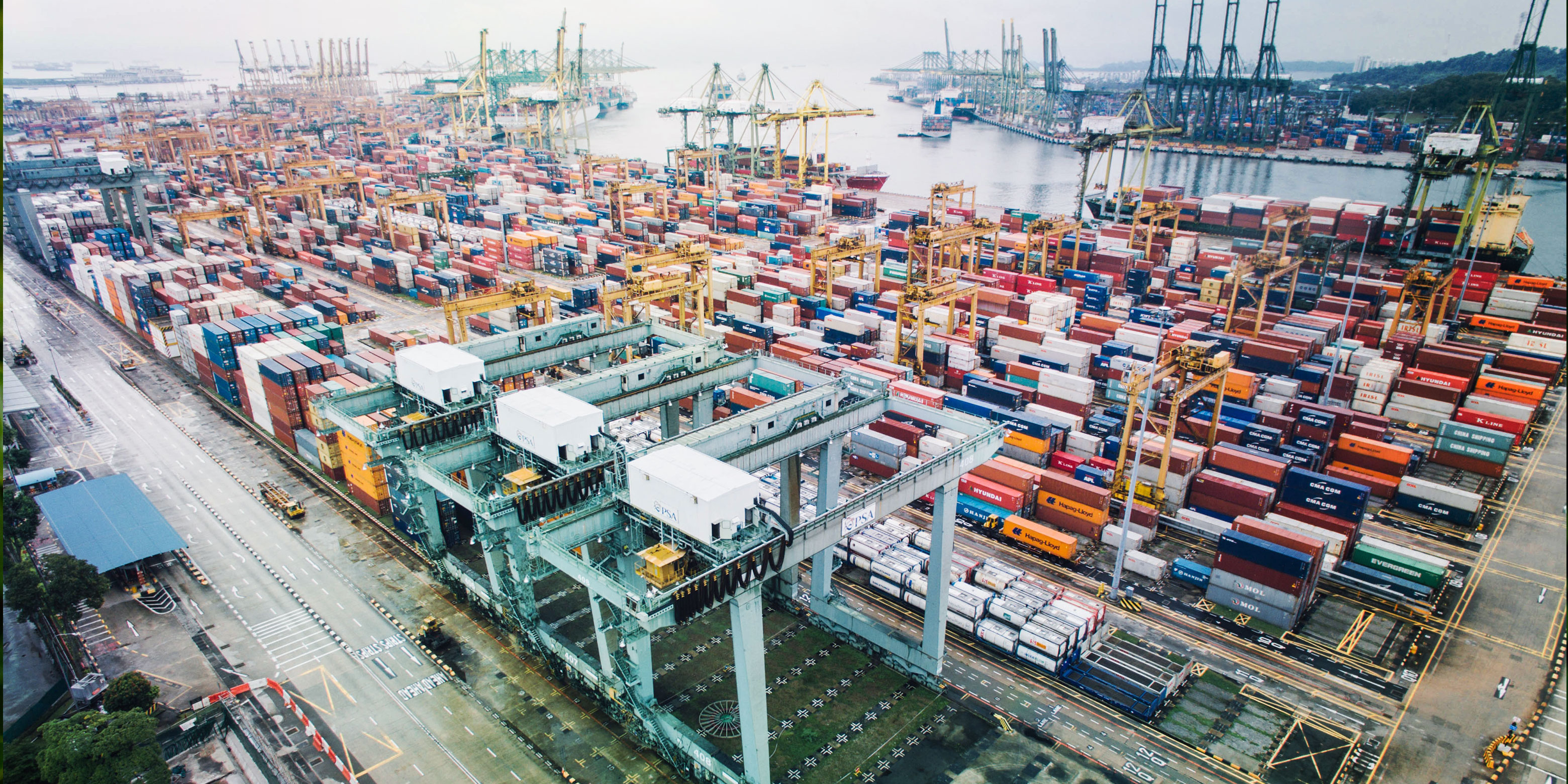KNOWLEDGE
Your Guide to Supply Chain Lead Times
Successfully delivering products or goods to end consumers relies on closely managing the constantly moving parts throughout the product’s journey. From raw materials to packaging, multiple components that make up the final product will travel through the supply chain before all the pieces can be assembled for delivery to the end consumer.
What is lead time in the supply chain?
Managing the timing, which is referred to as the ‘lead time’ of each component is vital to prevent supply chain disruptions which can cause a ripple effect of delays and costs. What is the meaning of lead time in supply chain management? Lead times refer to the total amount of time between placing a purchase order and estimated delivery date to its destination. Lead times are measured in calendar business days. Lead times can fluctuate based on manufacturing capacity or environmental factors such as weather.

Lead Time vs. Cycle Time
Cycle time is an additional term used in the supply chain to identify the amount of time it takes to produce a component. Cycle time measures production time and the waiting periods in between. The difference between lead time and cycle time is that the cycle time is related specifically with the manufacturing stage and contributes to the total lead time of purchase order to delivery.
Cycle time measures the production rate which is useful for monitoring internal processes, but customers will mainly focus on lead time since the estimate includes cycle time and all other operational processes involved with final delivery.
How is Lead Time Calculated?
Each component of a product has its own total lead time. Lead time is calculated by two main factors:
-
Manufacturing Lead Time: The amount of time it takes to manufacture the product. Manufacturing time can be affected by the quantity of orders a manufacturing plant is fulfilling. All plants have defined capacity, and with more orders to fulfill, the longer the lead times can grow as customer orders become queued.
-
Shipping Time: The amount of time it takes to ship the product from the manufacturing facility to the next destination. Shipping time can be affected in different ways depending on the method of transport. Many different factors can extend transit times such as customs procedures and clearance, port issues, and unexpected events causing lead time delays. Once the product is cleared and available for collection, delivery to the final destination is another factor for calculating lead time.
Managing the production process and lead times of an entire supply chain takes immense effort which is why many brands rely on partnering with companies who specialize in different parts of the supply chain. For example, as a packaging distributor, our core value to customers is providing and managing the packaging supply chain which includes packaging lead times.
How are packaging lead times calculated?
A supply chain team manages the packaging lead time (which includes monitoring both manufacturing time and transit time from manufacturer to our facility) while a freight forwarding team will manage the shipping time of the packaging from our warehouse to the next destination. Since lead times for both manufacturing and shipping packaging can also be affected by external factors, communication is key between all parties to make sure the packaging component is ready for the next phase of the product journey.
Is there a standard lead time?
Lead times vary by manufacturer and product type. Times can range from days, to weeks, to months. The complexity of a product, supplier inventory levels, and capacity impact lead time. Accurately calculating lead times is vital for brands to manage their supply chain and meet customer demands.

Benefits of Reducing Lead Times
Reducing lead times provides a variety of benefits for brands and overall customer satisfaction. The following are some of the top benefits when companies streamline their supply chain and effectively reduce lead times.
Costs
Shorter lead times equate to less time a product spends in the supply chain and the costs tied with each phase in the product journey. Labor, shipping, and warehousing are all costs that accumulate over time if the product does not move quickly enough through the supply chain. Identifying opportunities to reduce lead times will keep products moving through the supply chain and to the end user faster.
Prevent Stockouts
A product running out of stock (also known as stockout) can cause a ripple effect of issues especially if the stockout is a component of the final product. Stockouts can create a disruption in the whole supply chain which can compound into further delay to the end user. For example, there was massive supply chain disruptions in 2021 due to the COVID-19 pandemic causing a shortage in labor globally. According to a report by Adobe, Stockouts were up 250% in October 2021 compared to pre-pandemic. We continue to recover from the effects today throughout the global supply chain. Reducing lead times from production may be difficult, but finding other areas to reduce lead times such as shipping options can help prevent stockouts.
Reduced Inventory
Reducing lead times can also help reduce inventory. With a shorter lead time, less inventory needs to be warehoused, which can free up space and additional resources for other operations. However, it is a delicate balance to make sure there is still enough inventory in the event of supply chain disruptions.
Agility & Flexibility
Market shifts happen even with the best forecasting in place. Optimized lead times can help you accommodate sudden changes in demand without extensively disrupting your supply chain. Having the ability to quickly pivot when demands change can help meet consumer demand.

Reducing Your Supply Chain’s Lead Times
How can you reduce your supply chain’s lead times to reap the benefits? Although the supply chain is susceptible to a variety of uncontrollable circumstances, there are a few factors that are within your control to help optimize your lead times.
Reliable Partners
Partnering with reliable vendors is vital for your supply chain to run smoothly. Is your supplier consistently delivering a quality product within a reliable timeframe? Are communications transparent when there are delays? Are your vendors working together smoothly to make sure the product is completed within deadlines? As operations grow, vendors to support the growth and operational intricacies may become more complex. Finding a distributor partner can help relieve internal operations while also uncovering opportunities to reduce lead times to streamline your supply chain. At Paramount Global we have partnered with suppliers from a range of industries over the years, which helps us quickly identify opportunities to reduce lead times for new customers.
Local Resource
Working with a local resource can immensely reduce lead times instead of waiting for a shipment overseas. If a domestic supplier isn’t an option, you can significantly reduce lead times with an overseas supplier by working with a 3PL (Third Party Logistics). By working with a local 3PL, the product can be warehoused nearby until it is needed. Forecasting to restock the 3PL will still be needed to prevent disruption to your supply chain. With proper forecasting and inventory management, your product will be local to access in a few days instead of waiting for months for a shipment from across the world. At Paramount Global, we serve as a 3PL and have multiple facilities in the United States to efficiently deliver packaging to customers with just-in-time (JIT) delivery.
Standardize Processes & Materials
As operations grow, the internal processes supporting operations may not be streamlined to accommodate growth. Closely analyzing processes and materials used can help identify opportunities to reduce lead times. Automation can help streamline processes and improve accuracy when processing orders. Overall eliminating unnecessary steps or simplifying packaging solutions can both lead to improved lead times.
Shipping Considerations
Reviewing your shipping method is also an option to help reduce lead times. Shipping options are limited to ocean, air, road, and rail, but the route you choose is where you can find an opportunity to improve. When under time constraints, air shipments will be fastest but have a higher cost. If there is enough time for a product to be transported by an ocean carrier, different routes may offer savings on your transit time.
In addition to choosing trustworthy carriers, having the correct documentation for customs is also important for preventing a delay. The freight forwarding world is complex and can be overwhelming to navigate. Consider working with a freight forwarding partner to make sure your shipments are booked on time and are set up to clear through customs quickly.

Your Packaging Supply Chain Partner
Working with lead times requires strong partnerships and communication throughout the supply chain. Relying on partners who are experts in their segment of the supply chain can save immense costs on wasted time and resources. At Paramount Global we strive to deliver a complete packaging solution to customers by offering value-added services such as warehousing, inventory management, freight forwarding, and more to help customers achieve their goals. As an extension of your team, we can provide insight on how to help reduce lead times to streamline your supply chain. Learn more about how Paramount can help simplify your packaging supply chain by contacting us today.
Hayley is a marketing professional and copywriter with a background in crafting content for a diverse range of industries. She has been writing about packaging and supply chain logistics for Paramount Global since 2022. She specializes in explaining complex topics in a clear and engaging way and is an advocate for sustainability in packaging and supply chain management.
Read More
For over forty years, Paramount has been delivering perfectly integrated packaging and supply chain solutions.
